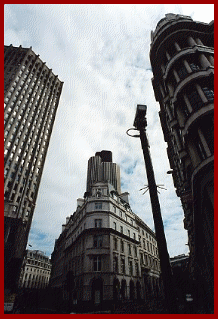| ||||||||||||||||||||||||||||||
Welcome to the | ||||||||||||||||||||||||||||||
 | ||||||||||||||||||||||||||||||
 | ||||||||||||||||||||||||||||||
All you need to know about lenses, | ||||||||||||||||||||||||||||||
We’ve looked at the various benefits of using manual iris lenses for almost all indoor applications, and yet the vast majority of surveillance cameras are still installed with automatic iris CCTV lenses. Auto Iris or AI as they used to be more commonly known, are pro rata far more expensive, more complicated, and generally inferior in terms of overall optical quality, than their manual iris equivalents. Wherever people are present, they need some degree of lighting to help them see where they’re going, and if a human eye can see, then a CCTV camera can also see, so why blow all that extra money on something you don’t necessarily need or want. Doktor Jon is not happy with the current thinking ... because there is a nice picture produced with an AI lens, that’s the way it oughta be. The guy up the road has AI lenses, so we must also have the same. There are essentially two main types of auto iris lens:- In practice, most lenses are left with the’ALC’ setting fully anti-clockwise, and the ‘Level’ pot turned to just past the point where the iris begins to function automatically, for the correct overall picture quality. | ||||||||||||||||||||||||||||||
 | ||||||||||||||||||||||||||||||
IMPORTANT: No material may be reproduced, copied or redistributed from this site, © doktorjon.co.uk 2004 - 2008 Homepage...:...Gateway...:...Technical Gateway....:....Quickfind Index....:....Equipment Directory | ||||||||||||||||||||||||||||||

